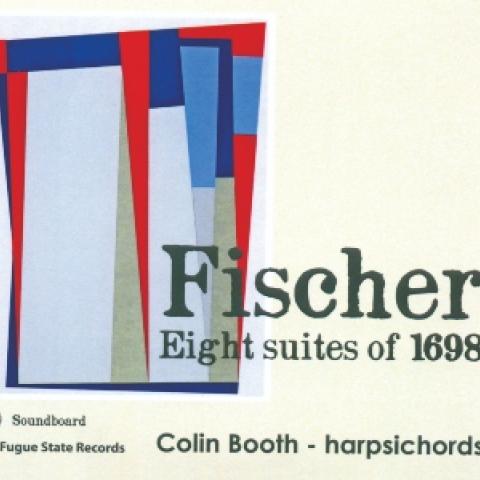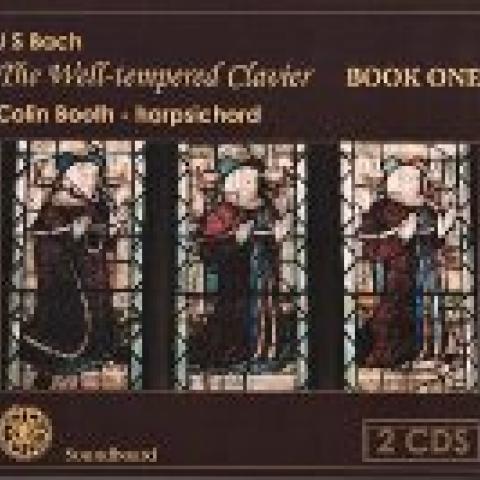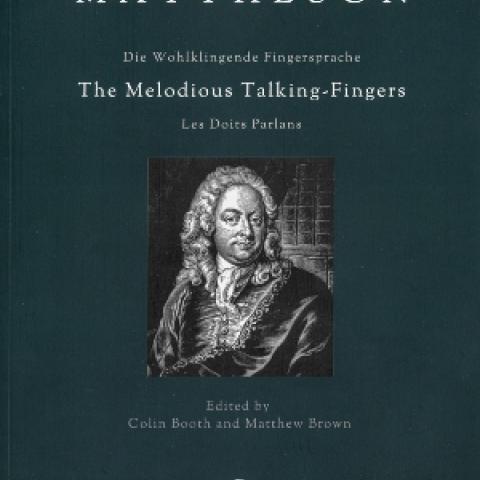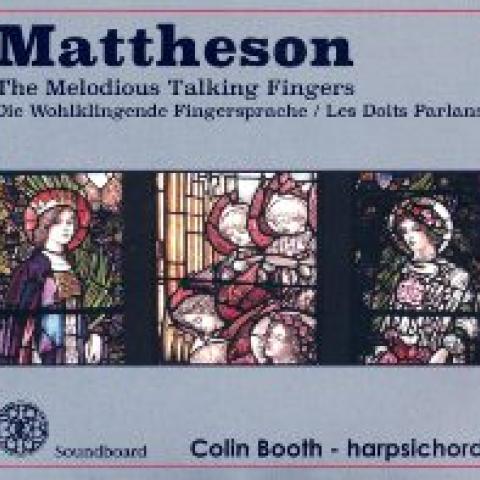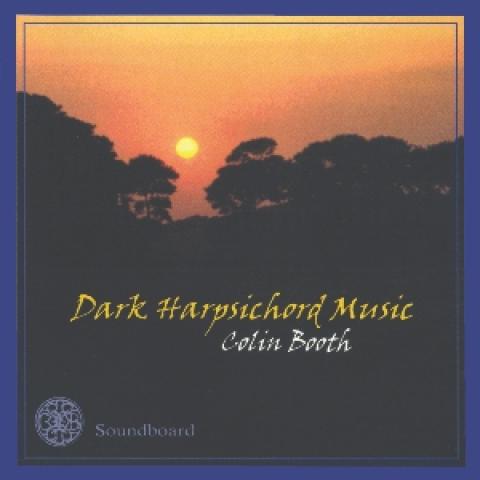A member of The Diapason’s 20 Under 30 Class of 2021 (see the May 2021 issue, page 19), Curtis Pavey is a graduate of the doctoral program at the University of Cincinnati’s College-Conservatory of Music where he studied harpsichord with Michael Unger and piano with James Tocco. More information is available at curtispavey.com.

Fogliano to Froberger: A Century of Ricercars, performed by Colin Booth, harpsichord and ottavino. SBCD-221, $16.98. Available from ravencd.com and colinbooth.co.uk.
Ricerchare di Julio da Modena per musica ficta in sol per la via di G sol re ut, Julio of Modena; Ricerchare de Jacobo fogliano, Ricerchada di Jacobo fogliano do Modena, Jacobo Fogliano; Ricercar secondo, Girolamo Frescobaldi; Recercada del primo tono per b mollo, Claudio Veggio; Ricerchare de Jacobo fogliano da modena, Fogliano; Ricercar Terzo, Frescobaldi; Ricercar I, Jacob Froberger; La fugitiva Claudius a.4,
Veggio (?); Ricercar Ottavo, Obligo di non Uscir di Grado, Frescobaldi; Ricercar IV, Froberger; Ricercare di Jocobo fogliono da modena, Fogliano; Recercado per b mollo del primo tono, Veggio; Ricercar Nono, con Quattro Soggetti, Frescobaldi; Recercar del primo tono, Veggio; Ricercar V, Froberger; Recercada per b Quadro del quorto tono, Veggio; Ricercor II, Froberger; Recercada VII, Veggio (?); Recercoda per b Quadro del primo tono, Veggio.
Harpsichordist and harpsichord maker Colin Booth recently recorded a collection of ricercars from the sixteenth and seventeenth centuries. The recording includes works of nearly forgotten sixteenth-century composers such as Giacomo Fogliano, Julio of Modena, and Claudio Veggio, as well as works of Girolamo Frescobaldi and Johann Jacob Froberger. Displaying a great variety of different characters, affects, and styles, this recording also features several of Booth’s harpsichords, creating a fascinating sonic tour of the history of the ricercar.
In his liner notes, Booth details the rich history of the ricercar, beginning with its origins as a piece originally for the lute or bass viol. The ricercars of the sixteenth century invited significant ornamentation by the performer and were freer in nature. The ricercar later developed into a stricter compositional form by the seventeenth century, allowing composers to demonstrate more complexity in counterpoint and form. To represent the early style of ricercar, Booth chose works by Giacomo Fogliano (1468–1548), his pupil Julio of Modena (1498–1561), and Claudio Veggio (ca. 1510–?), all composers of the sixteenth century from northern Italy. Their music, which exists in manuscript form at the Collegiate Church at Castell’Arquato, incorporates a wide variety of different approaches to the ricercar. To contrast this, Booth chose works of Frescobaldi and his pupil Froberger, exemplifying the radical changes to the ricercar genre and form.
For this recording, Booth used three different Italian-style keyboards including two harpsichords and an ottavino, a smaller instrument pitched an octave higher. In the liner notes of the CD, each track is labeled with the instrument that Booth used so that listeners can follow him as he alternates between the different keyboards.
The ottavino has a bright and resonant sound aided by limited damping. It is crafted after an original instrument from the seventeenth century, originally built by an anonymous builder of the time.
Besides this, Booth uses two different harpsichords. Described as a small, single-strung harpsichord, Booth’s sixteenth-century harpsichord used in this recording is pitched at A=440. The other instrument, which Booth refers to as a large double-strung harpsichord, is a seventeenth-century-style instrument with a larger compass necessary for several of the selections. The instrument is pitched lower, creating a mellower, but very sustained sound.
For more information about these instruments, listeners should view Booth’s website, which contains further information about this recording project and several YouTube videos demonstrating this music on his own instruments. The use of several very different keyboards throughout the recording varies the sound and adds to the appeal of this captivating program.
Booth’s playing is musically sensitive and compelling throughout. Claudio Veggio’s Recercada del primo tono per b mollo is played with a flowing approach to the musical lines and gestures. Booth plays Fogliano’s Ricerchare with a persuasive sense of timing, highlighting the stately aspects of the affect. Frescobaldi’s Ricercar Ottavo, Obligo di non Uscir di Grado, an eclectic piece containing no intervals of a second, is played with a probing spirit on the ottavino. While listening to Froberger’s Ricercar I, one can hear how Booth brings out the surprising intervals and shape of the subject to great effect. In Froberger’s Ricercare V, Booth demonstrates his capacity for lyrical sound, shaping the phrases with significant care. The disc also includes extended works of Frescobaldi, Froberger, and Veggio; the latter’s Recercada per b Quadro del primo tono closes the disc in dramatic, virtuosic fashion.
Listeners can expect to find a number of unfamiliar gems on this recording by Booth. His thoughtfully designed program demonstrates the vast diversity within the ricercar genre, and because of this, Booth successfully engages listeners on an exploration of this fascinating repertoire.
Colin Booth’s website: colinbooth.co.uk

